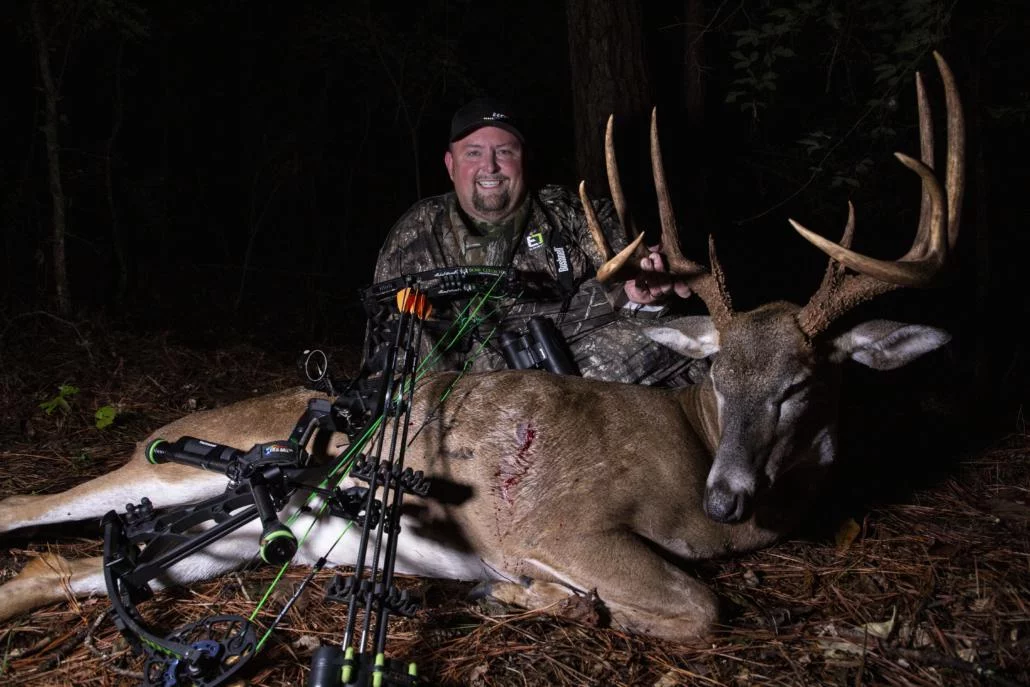Tools for Hunting the Wind This Season
If you’ve hunted long enough, we’d bet our bottom dollar that this scenario has happened to you. You’re sitting in the tree stand, daydreaming about the giant whitetail that’s surely about to step out at any moment, when you hear a branch snap. All senses fire up and you’re immediately focused. You see a deer materialize downwind of your tree stand, and you mutter a low curse followed by a quick prayer. Shortly, the deer stomps its hooves and looks spooked, before it bounds off blowing its alarm call as it goes. You’ve been winded. Hunting the wind is probably one of the first hunting practices you learned. Yet, you still occasionally get busted. What gives? Here are some of the ground rules for hunting the wind intelligently this fall.
Basics of Hunting the Wind
Before we jump into the basic steps involved in hunting the wind, let’s define what we mean a little. What we’re talking about is using the wind direction to your advantage versus letting it blow your scent straight up the nostril of a wary whitetail. You should always aim to be downwind of where you expect a mature buck (or any deer) to show up. Going one step further, you should be on the downwind side of downwind. Let’s use an example.
Let’s say you’re hunting a doe bedding area one morning. Obviously, you don’t want the wind blowing your scent into the bedding area, or the does would blow right out the other side. But a mature buck is thinking the same thing, so he will cruise the downwind side of the bedding area to scent-check for receptive does. That means you need to be further downwind from where you expect him to travel. Here are some tips to hunt the wind this fall.
Multiple Tree Stands
One of the best ways to play the wind while hunting is to plan ahead. Weather conditions can change rapidly, especially in the fall as the weather is changing. One day, it may be blowing softly from the east. The next day it is gusting from the northwest, followed by a steady wind from the southwest the day after that. If you only have one stand, you have to limit the days you hunt, which is a bummer. Plan ahead for these conditions by setting up a few different tree stands in different locations. Each location should be suited for a particular wind direction. If you check the forecast in the morning and see that the wind is different than you planned, you can simply hunt a tree stand where the wind is in your favor.

Obviously, this is easier done on private land, where you can set up multiple tree stands ahead of time and let them stay there. But if you primarily hunt public land, a climbing tree stand is a good solution. It helps to have some locations in mind for given wind directions, and then you can simply bring your stand with and set it up that morning of the hunt.
Plan by the Weather Forecast
As mentioned, a huge part of hunting the wind is watching the forecast and paying attention to the wind direction. This can be as simple as tossing some milkweed seeds into the air to observe the direction, or you can get further clarity by incorporating some simple technology into the process. You’ve heard us talk about the BaseMap app before, and why it’s such a game-changer for hunting. But one of its coolest features is HuntWind™, which gives you the current and future wind direction in a given tree stand location. Check out the video below from Michael to learn more.
You can also use this feature to be mindful of the wind direction as you walk into your stand – if your entry trail goes directly upwind of a suspected bedding area or food plot, you need to find a new access route. Likewise, you can use this feature to put the wind to work for you. If the app says the wind will be blowing a certain direction, you can hang a few scent wicks doused in doe estrous cross-wind in either direction from your location. If a buck does manage to circle downwind of you, the estrous could draw him in for a shot before he gets to your scent cone.
Wind Indicators
Hunting deer in the wind is definitely possible, and in fact, it can be easier with a steady wind in some cases because you can predict how deer might move through the woods. Besides checking the HuntWind feature, you can also use some simple wind indicators to watch the air current around your stand. Sometimes, the wind will swirl around your location in ways you didn’t predict, making wind indicators very helpful. Some people grab milkweed seeds on their walk in, which are fluffy and float on the air current for long distances. You can also buy small tufts of cotton, which accomplish the same thing. Or you can use powders, which you squirt from a small bottle and watch which direction the wind is going.
Plan for Obstructions
A good way to hunt deer in the wind is to plan your tree stand locations so that there are obstructions downwind. For example, a large tree blowdown, brush pile, or steep creek slope should be enough to discourage deer from moving through this area. If they go further downwind of this area, your scent should have dissipated enough that it won’t be detectable. When you can find a suitable tree just upwind of this location, you can be reasonably sure that deer won’t circle downwind, keeping you in the clear.
When You Can’t Beat the Wind
To be clear, a deer’s nose is very powerful and likely its best survival tool. So any time you allow your human scent to drift their direction, there’s a good chance you will be busted and your hunt could be over before you know it. But sometimes, things happen. Maybe you didn’t have time or it wasn’t possible to prepare multiple stands to account for different wind directions. Maybe the wind shifted on you unexpectedly, but you’d prefer to keep hunting.
Attract and Distract
If you can’t beat the wind, try using the wind to your advantage by attracting and distracting the deer. Set up near a food source or place some piles of attractants and feed to lure them in and hold their attention. Big & J offers some very tempting and aromatic feed sources that could do just that. For example, a pile of BB2 feed paired with a nearby pile of Legit mineral will put out a powerful scent in the woods.
Scent Elimination
When hunting the wind isn’t possible, some prevention can save the day. Some unwanted sources of human-related odors deer could catch while you’re in the stand could be coming from your breakfast, filling up the truck with gas, or other sources of scent you pick up from your house or vehicle. To combat this switching to rubber hunting boots in the field and even clothes could help avoid spreading this scent on the ground.

For better protection, consider using Bone Collector Scent Elimination products. Using these products, you have a very good chance of fooling a deer’s nose even when the wind won’t cooperate with you. This season, don’t be afraid to hunt when it’s windy. But make sure you put the wind to your advantage instead of letting it ruin your hunt. Using these simple hunting tactics, you have a great chance of fooling a deer’s nose.



